Dr Reiner Knizia’s Rebirth is simple, beautiful and packed with impactful choices
Any experienced gamer will know the name Reiner Knizia — but the good doctor tends to split opinion when it comes to whether his games are any good, or not. Here at B3, we enjoyed Yellow & Yangtze and loved The Quest for El Dorado, but we didn’t enjoy Royal Visit quite as much. Rebirth — published in 2024 by Mighty Boards, Rebirth is a big box experience with Knizia’s signature low complexity. But does the game actually live up to its glorious production?
Rebirth is presented as a “bright and hopeful” game about clan leaders rebuilding Scotland following a series of disasters. I must admit that the concept raised a chuckle with me because — as with most games — Rebirth ends in quite a brutal and often highly interactive race for points that feels anything but collaborative.
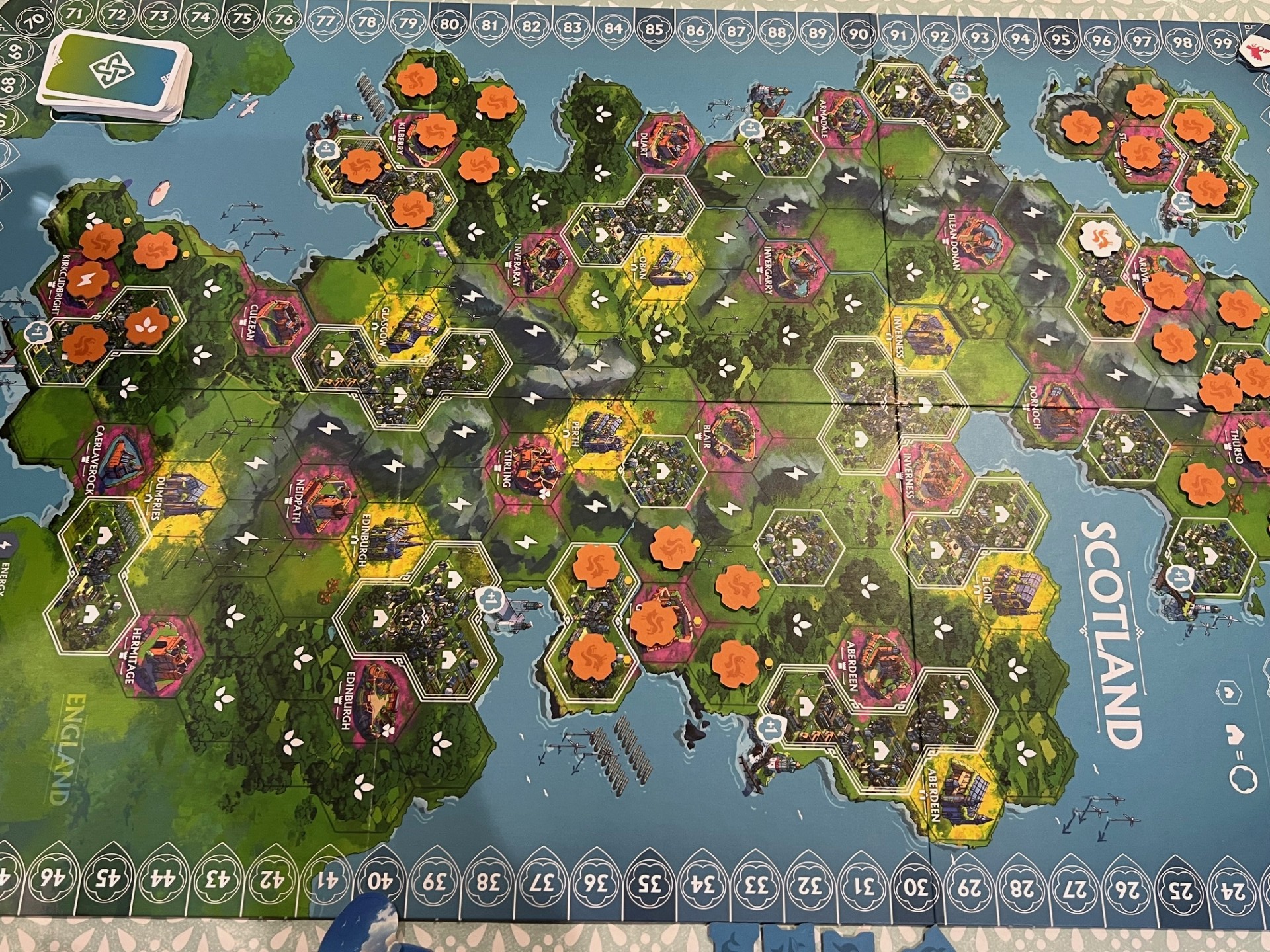
The reason for this feeling is because Rebirth does what some of the very best games do — it tasks players with understanding a very light ruleset that in turn leaves them free to focus on crunchy, highly tactical decisions. Explaining Rebirth is an absolute breeze and the whole teach takes about five minutes when you play the original Scotland map — maybe six or seven minutes if you flip the board and play in Ireland, which comes with some extra tokens and slightly different scoring.
On a turn, all each player will do is place a single tile drawn at the end of their previous turn. They don’t draw two or three and choose one, they have one tile in hand, and they must place it. Tiles feature printed houses, food farms and energy farms, and the board is covered in symbols to match. Points are scored when either food or energy farms are placed, with one point per chained farm of the same colour — for example if you place one farm on its own, you get one point… If you place one farm next to one of your own existing farms of the same type, you’ll score two points (and so on).
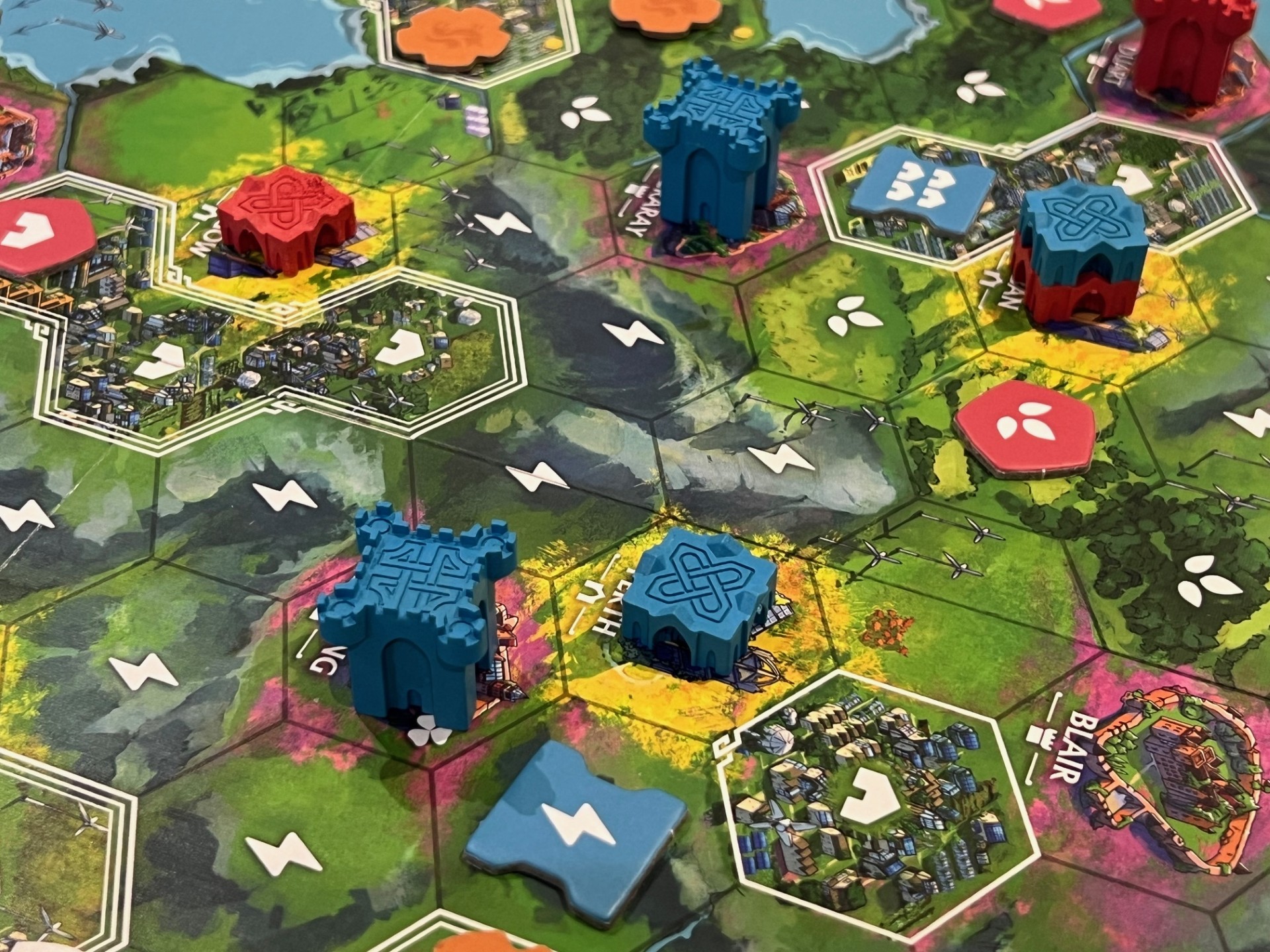
Houses are slightly different and must be placed in settlements of one, two or three hexes. If placed in a single hex settlement, scoring will happen immediately based on the number of houses shown on the token placed. For two or three hex settlements, one or more players may contribute the value of houses on their tokens, and scoring happens when the building is complete – delivering variable points for the most and second most contribution (but not for third place in the largest settlements).
Placing a token next to a castle or cathedral space may allow the player to place one of their gorgeous castle or cathedral pieces on the board which is considered under their influence. Cathedrals can always be influenced exactly once per game by each player, and ingeniously, when a player does this they will draw an objective card from the deck — and with eight cathedrals in the game, that could mean eight objectives to score.
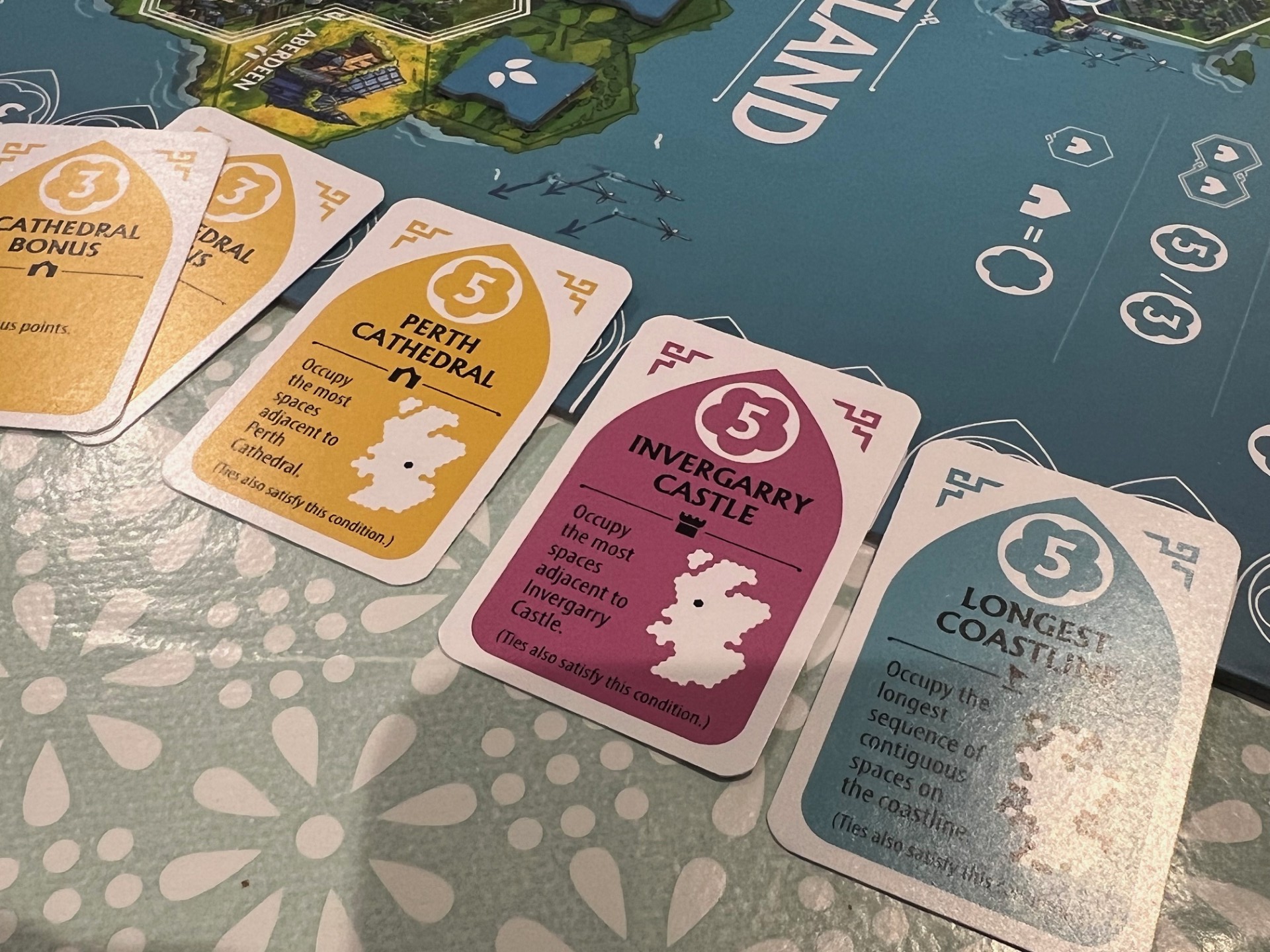
Castles are slightly different and will only be influenced by the player with most tokens next to them. So if a player is the first to put a token next to one, they will influence it and can place their castle piece on it. If a second player places a single token next to the same castle, nothing will change, but if that second player places a second token (and now has a majority of two versus one) then they will take control of the castle and swap the first player’s piece out for their own. It’s worth knowing that castles are worth five points each at the end of the game.
Gameplay in Rebirth is extremely quick as a result of this simplicity, and hopefully by drawing up your token at the end of your prior turn, a player will have time to think about their next move. That said, indirect interaction is frequent and often quite brutal in Rebirth, with players often targeting specific castles, trying to block off cathedrals (to deny objective cards) and using their own tokens to interrupt longer runs of opposing tokens. It’s quite possible to score five or six points with a single farm placement, but to be honest the only way you’ll do that is if your opponents fail to stop you.
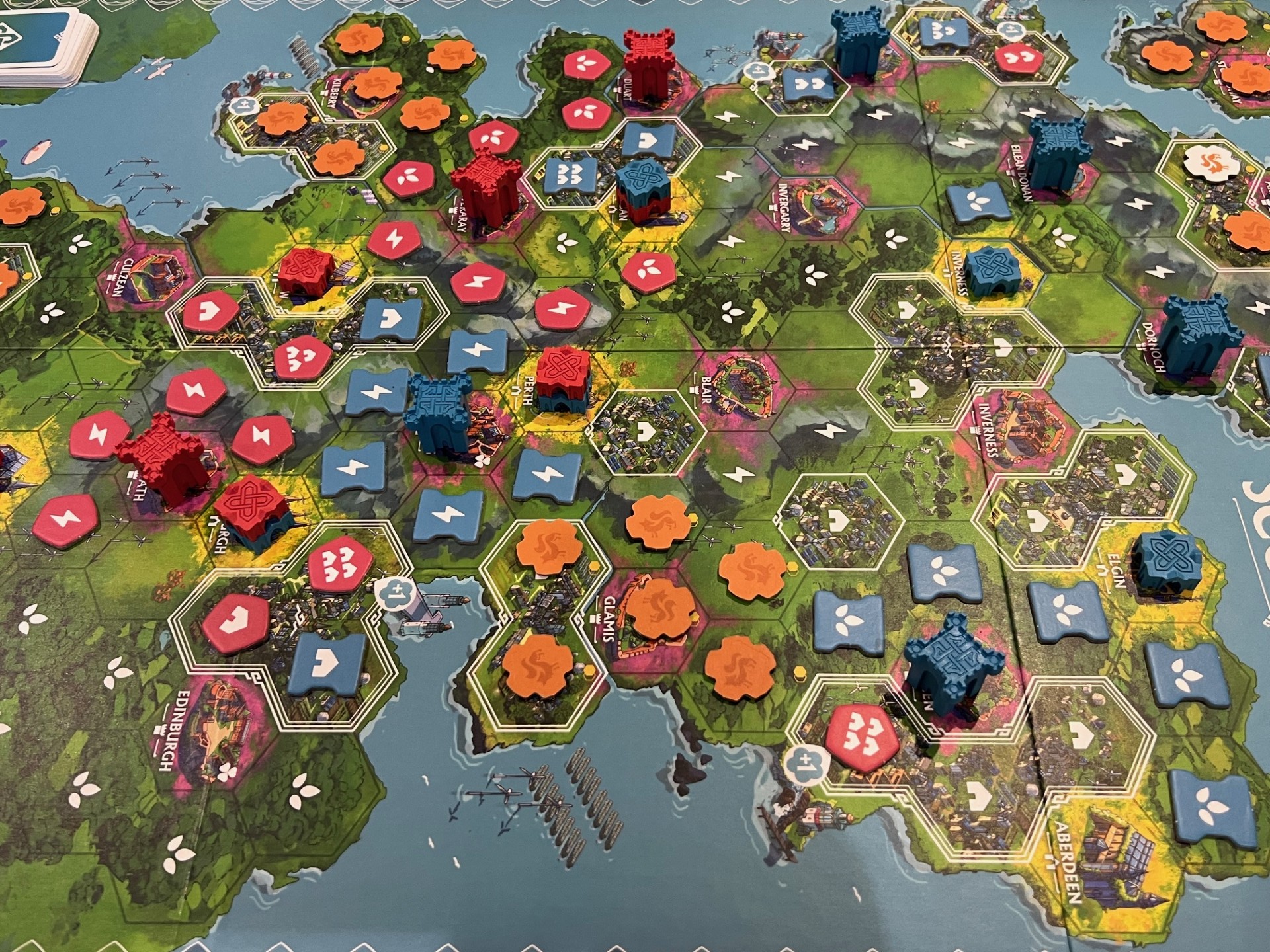
This gives Rebirth lots of ways to play. Some people focus on getting objective cards and scoring them (usually worth 5 points each if you can achieve something specific printed on them), whilst others go for long chains. I quite enjoy grabbing a lot of castles early and then using my mid-game tokens to disrupt other players. I’ve read that true genius is making complex topics seem simple, and Rebirth reminds me of this — the simple rules mask the deep, deep tactical gameplay that lies beneath.
The retail version that I have (and which is what you would buy from a store) has fantastic production value, with a beautiful board and some fantastic “re-wood” models for castles and cathedrals. The cards are nice and the outer box is appealing to almost anyone, whilst the rulebook is succinct and clear. If you can sense a “but” coming, then you’d be right, though.
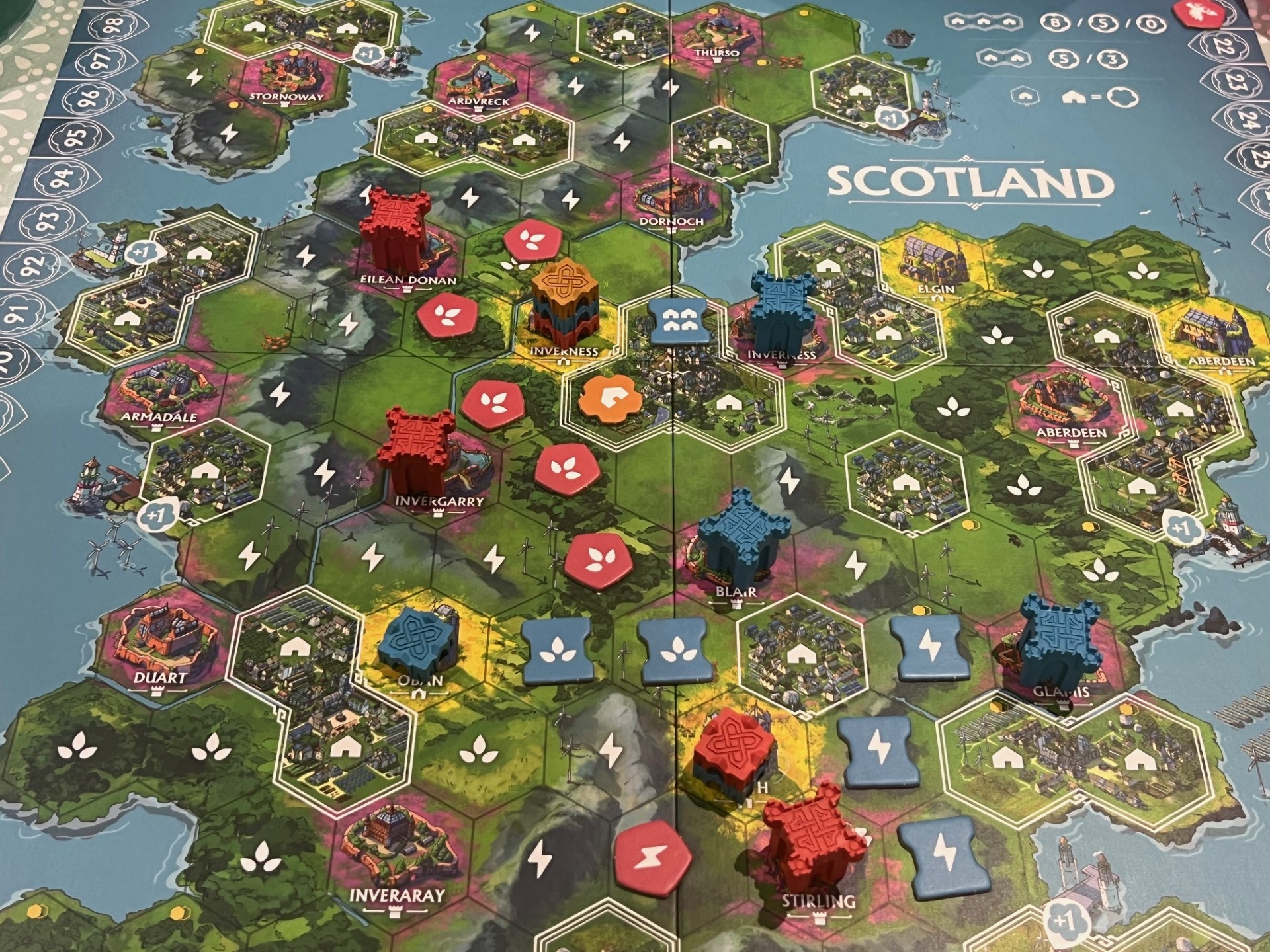
Despite these positive aspects of the production, I really do not like the tokens in this retail version. These are made from cheapish cardboard and considering that each one is essential to gameplay and must remain secret, they feel as though it won’t be long before marks and scuffs begin to appear that could give “tell’s” to which token is which. A Limited Edition of Rebirth was available on Kickstarter and this includes 4 draw bags plus much thicker tokens, and whilst the bags are a nice extra, I wish the better tokens had been retained. The inclusion of two spare tokens per player is helpful, but I can see Rebirth having a limited lifespan of maybe 20-30 plays depending on how rough you are with it.
Despite this final knock to the reputation of Rebirth, I want to celebrate the excellent gameplay and incredibly clever juxtaposition between lightweight rules and strong, clever decisions. I have spent most of my time playing with our two eldest children, but I’ve also played multiple games with adults and so far, not a single person has considered Rebirth to be a miss. I like medium to heavy games personally, and Rebirth gives me all I need in terms of decisions despite rules that are light enough for kids as young as seven or eight to understand. Rebirth is not quite a masterpiece, but it is certainly up there among my favourite games of 2025 so far.
You can purchase Rebirth from their Kickstarter.
Comments are closed.